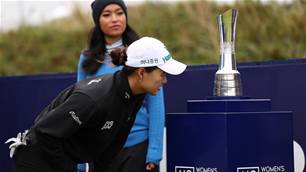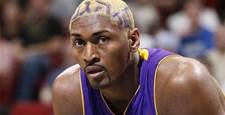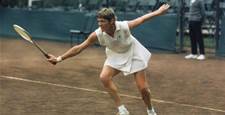Boiling down her recent and dramatic improvement, Dellacqua isolates “fitness and the mental side coming together”.
Boiling down her recent and dramatic improvement, Dellacqua isolates “fitness and the mental side coming together”.
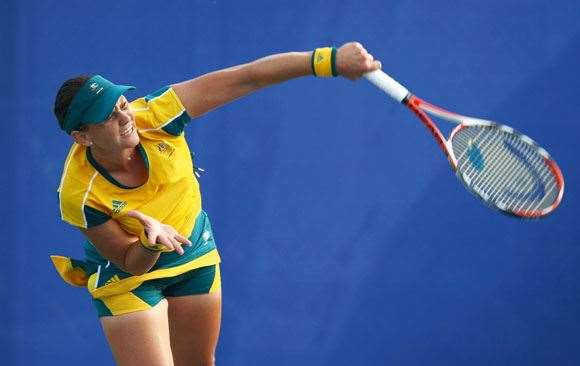 Dellacqua sends down a screaming serve for her country at the Beijing Games. Image: Stefan Postles
Dellacqua sends down a screaming serve for her country at the Beijing Games. Image: Stefan Postles“THIS IS THE MOST AMAZING performance you’ll ever see,” raved veteran commentator John Barrett of Casey Dellacqua’s 8-6-in-the-third upset of the seeded Patty Schnyder at the 2008 Australian Open. “You can tell your grandchildren you were there the day Casey Dellacqua came of age as a player.”If Barrett was gilding the lily with his first statement, he was bang-on with the second. After overhauling Schnyder from 6-4, 3-0 down, the lefty Dellacqua scored a rousing upset of former No. 1 Amelie Mauresmo to charge into the last 16 and emerge as the new top Australian. Finally an Aussie other than Lleyton Hewitt was creating excitement in the second week of a Slam. Even Casey’s Nan became a front-page celebrity and had her flag-wearing visage beamed around the world.It was all a far cry from Dellacqua’s baptism of fire in the 2006 Australian Open first round when, as a 20-year-old unknown, she faced world No. 1 Lindsay Davenport on Rod Laver Arena and was walloped 6-2, 6-1. The West Australian’s left-handed shot-maker’s flair was unmistakable, but undermined by her chunky physique. Three Opens on, a trimmer Dellacqua is lodged in the top 50, having peaked at No. 39 last season. She also emerged as a doubles force in 2008, reaching the French Open final and Wimbledon semis with different partners.“Fitness has been a huge factor in why I established myself as a top-50 player,” Dellacqua considers. “That match against Lindsay seems so long ago.” Boiling down her recent and dramatic improvement, Dellacqua isolates “fitness and the mental side coming together”.
Lashed by Lindsay
“Looking back, I wasn’t nearly ready to play Lindsay Davenport at the Australian Open. That match put me on the big stage for the first time and the huge learning out of it was how much work I had ahead of me. There were positives and negatives, but overall it was a positive experience in terms of moving ahead and moving forward in my career. I made a conscious effort to work on fitness because I always felt I had the game to do well.”
Game, set, slam
“In tennis you have to be ready from day one of the calendar; the first Grand Slam, the Australian Open, is only a couple of weeks into the year. Since the WTA has created a longer off-season, most players finish the year at the end of October, so we have a good eight weeks between seasons. Because of my [injured] shoulder, I finished the 2008 season in mid-September, earlier than I would have liked. From mid-October it was over to
the Australian Institute of Sport in Canberra and hard training until Christmas.”
Related Articles

Feature Story: Moving the Needle
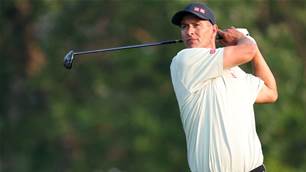
Scott headed home for Australian majors
